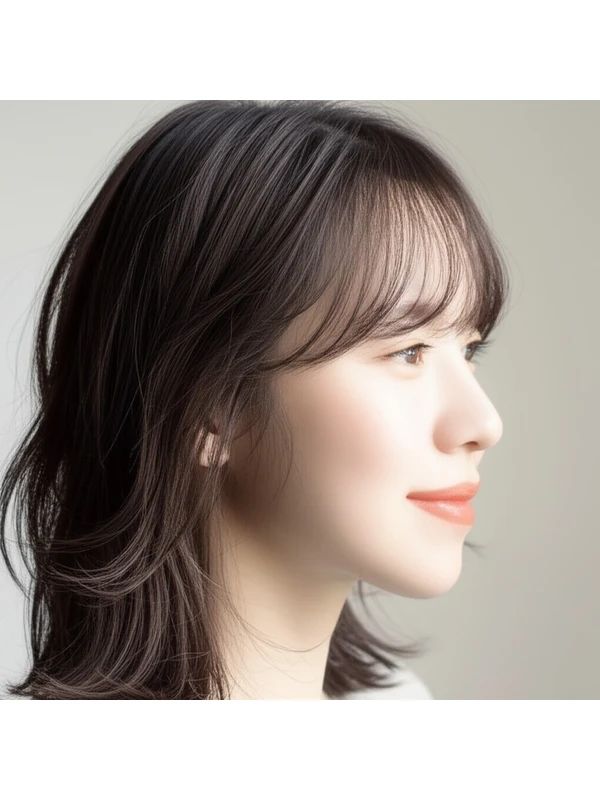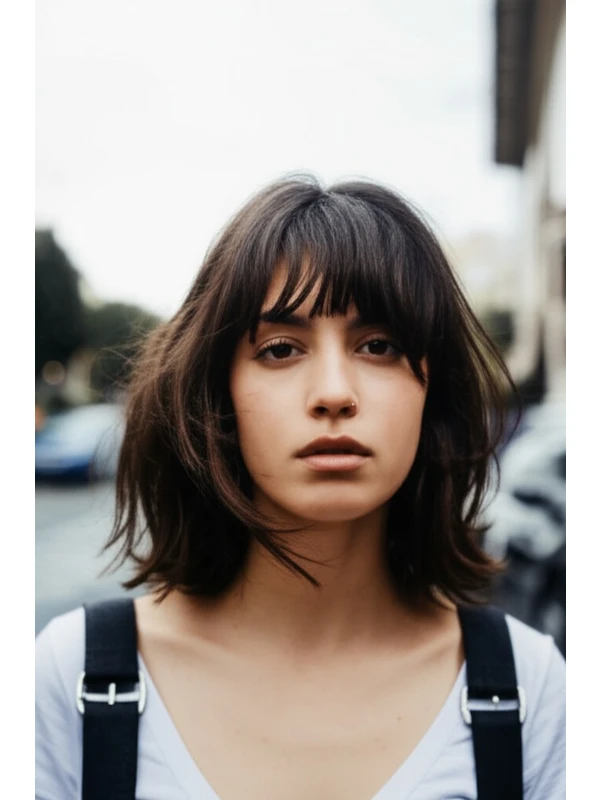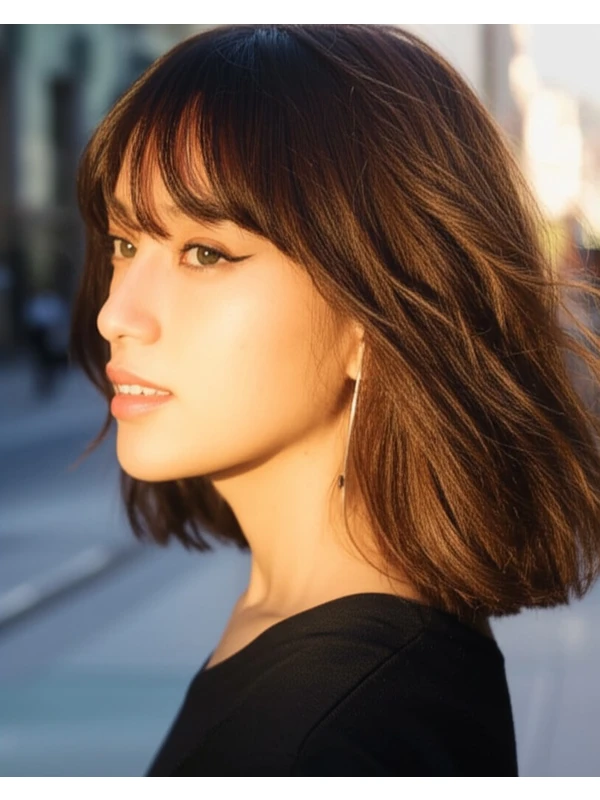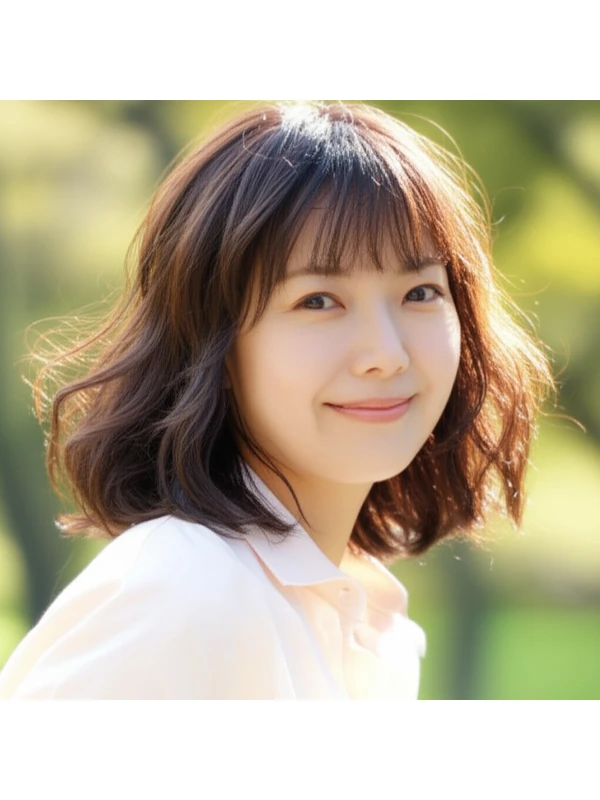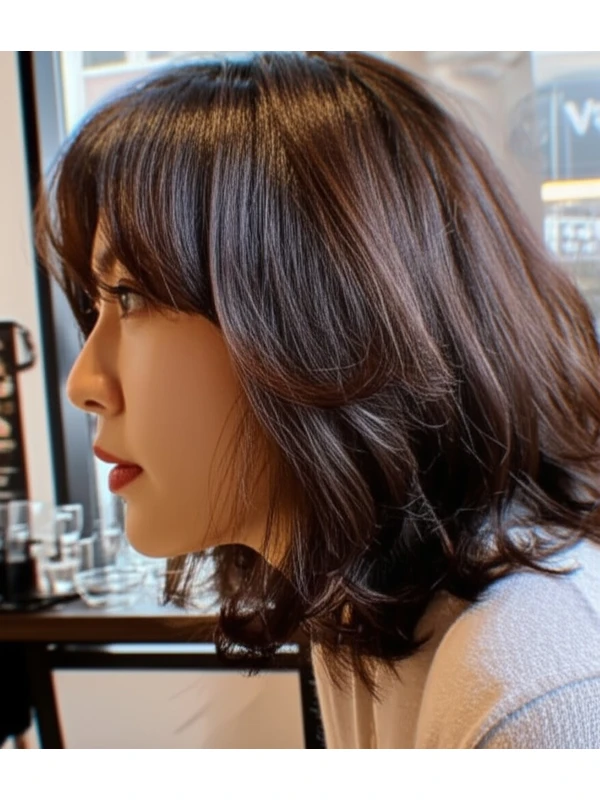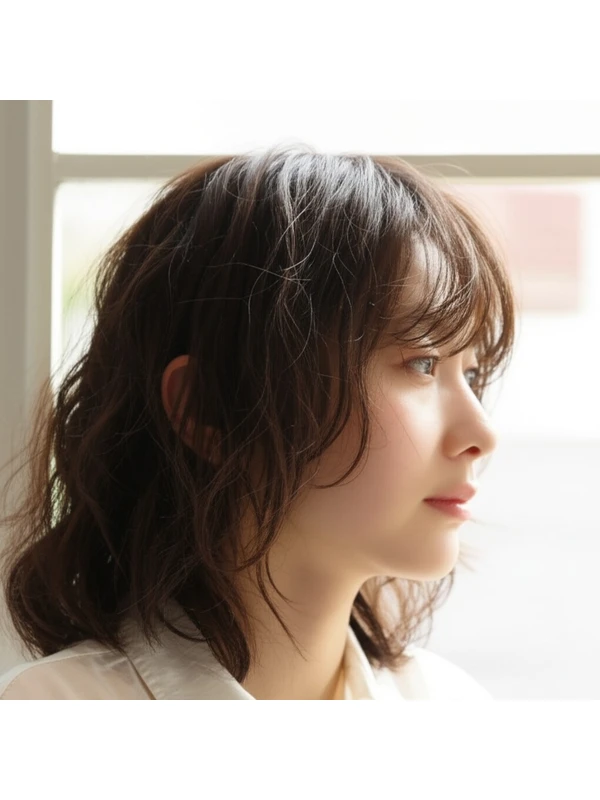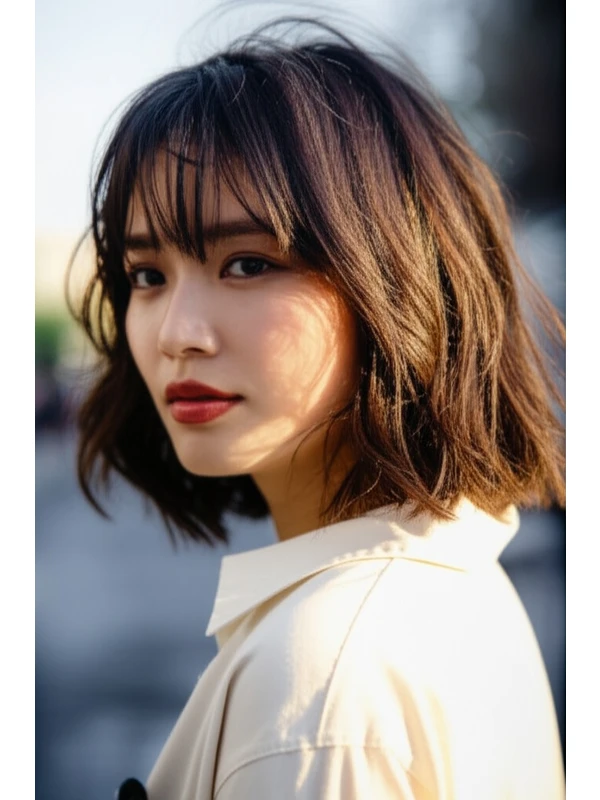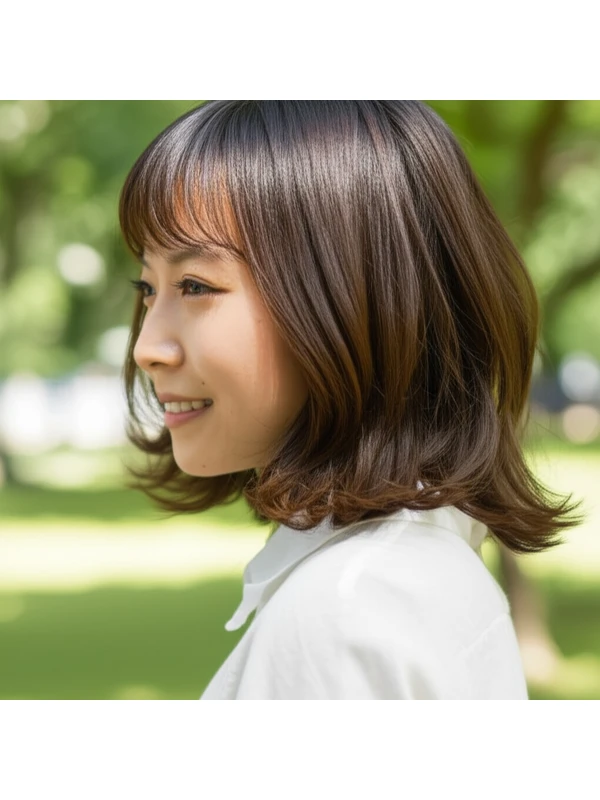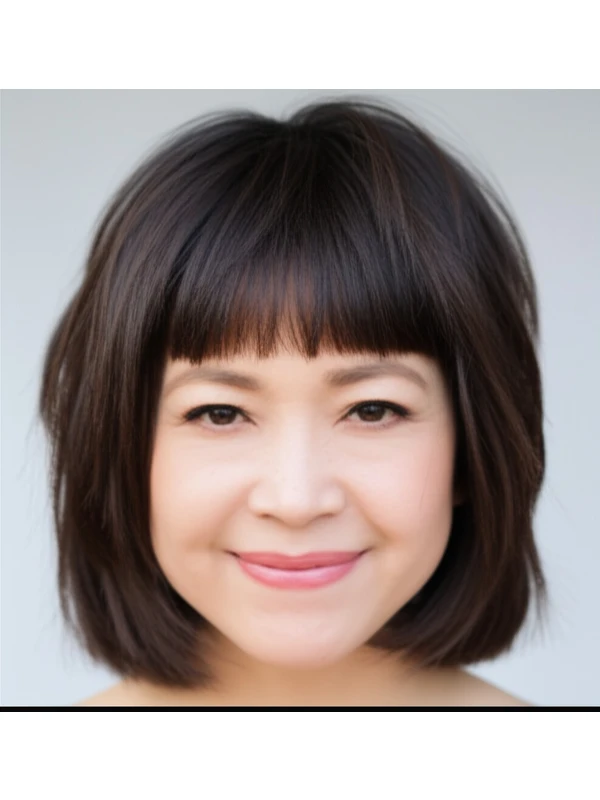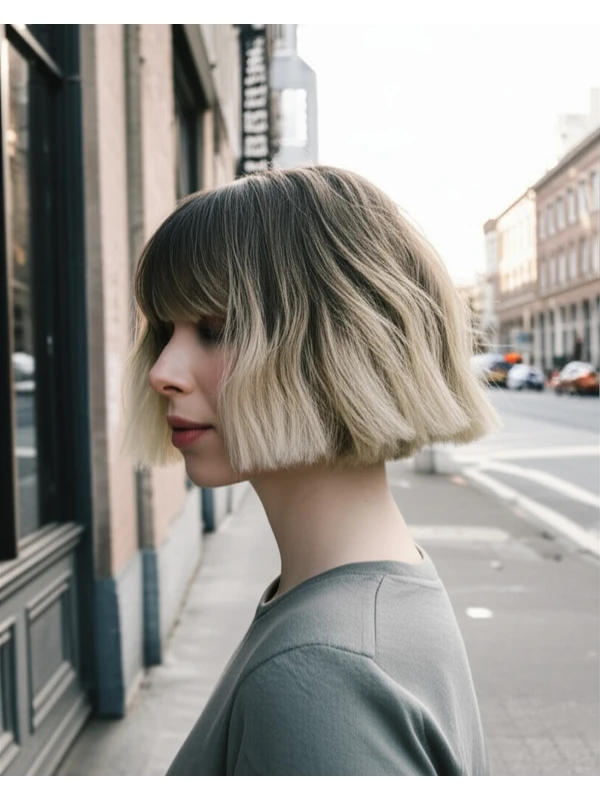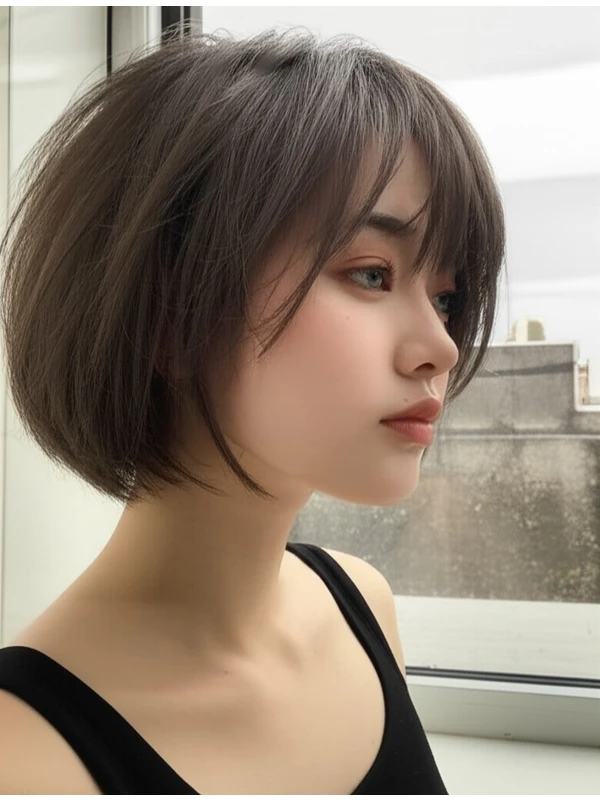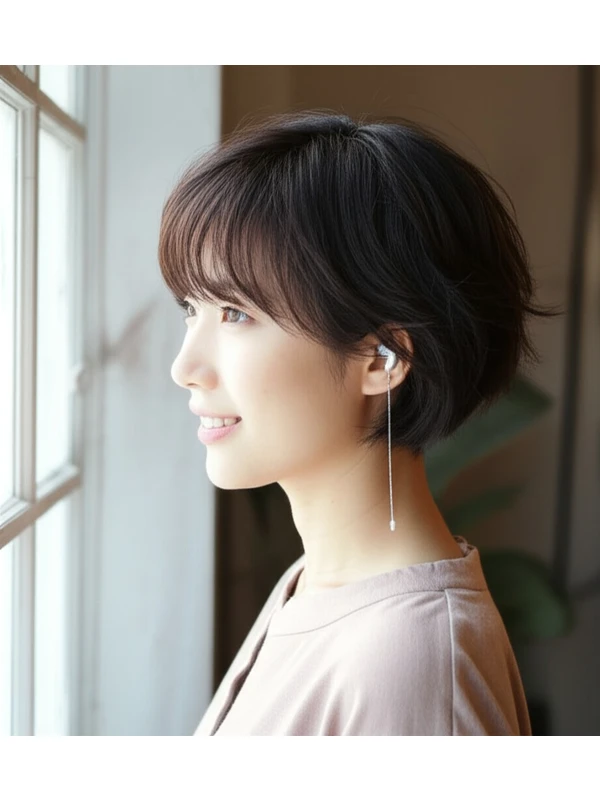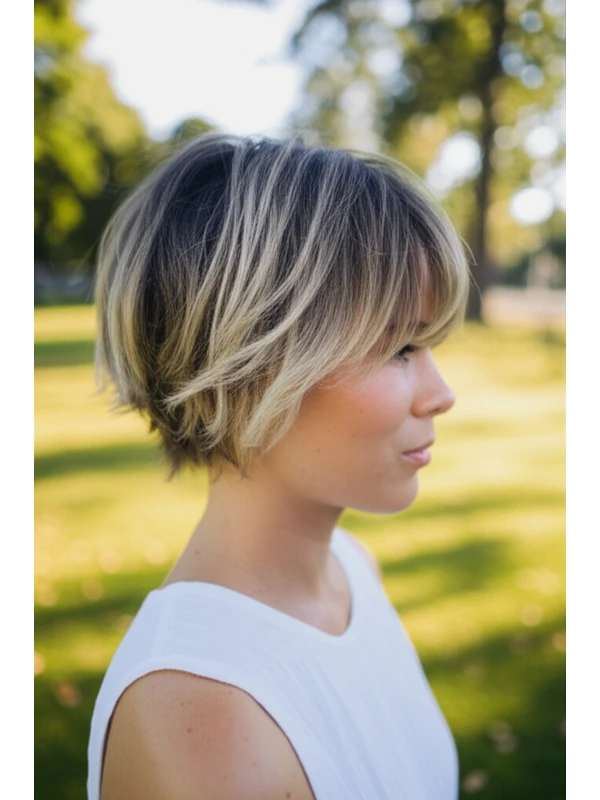#See-Through Bangs: A Modern Guide to Effortless Style
See-through bangs are having a major moment! They offer a soft, modern update to any hairstyle, but figuring out if they're right for you takes more than just scrolling through Instagram. This guide breaks down everything you need to know about see-through bangs – from their history and how they flatter different face shapes to styling tips and maintenance.
#1) Background & Definition: What Are See-Through Bangs?
See-through bangs, also known as curtain bangs or wispy bangs (though these terms aren't exactly the same), are a hairstyle characterized by their airy, diffused appearance. Unlike blunt, heavy bangs that cover the forehead completely, see-through bangs are cut with lots of texture and varying lengths to create a soft, blended effect. They’re designed to look like they almost disappear into your hair when styled softly – hence the name!
- Cut Geometry: The key is layers. See-through bangs aren't one solid piece; they’re built from several shorter pieces that blend seamlessly with the rest of your hair.
- Key Features: Softness, texture, blended appearance, varying lengths, face-framing effect.
- Typical Length Ranges: Generally fall between the eyebrows and just below the chin. The longer length is more common to allow for versatility in styling.
- Alternative Names: Curtain bangs (often a bit longer & softer), wispy bangs (can be shorter & thinner).
#2) Face Shape Fit: Finding Your Perfect Fringe
See-through bangs are incredibly versatile, but the length and placement can make all the difference depending on your face shape.
- Oval: Lucky you! Oval faces generally suit almost any length of see-through bang. Experiment with longer curtain bangs that sweep to the cheekbones for a romantic feel or shorter, wispier versions.
- Round: Longer, side-swept see-through bangs are your best bet. They help elongate the face and create asymmetry, which softens roundness. Avoid very short, blunt bangs as they can emphasize width.
- Square: Soften those angles! See-through bangs that start higher on the forehead (around the cheekbones) and blend softly will soften a square jawline. Avoid straight across styles.
- Heart: Curtain bangs work wonderfully to balance a wider forehead and pointed chin. The face-framing effect draws attention away from the narrower lower portion of your face.
- Diamond: Similar to heart shapes, see-through bangs can help soften strong cheekbones. Longer curtain bangs that sweep towards the jawline are particularly flattering.
- Oblong (Long): Bangs add width! Shorter, slightly thicker see-through bangs will visually shorten a long face. Avoid very long, straight-across bangs which will only elongate your face further.
#3) Body Proportions & Height Guidance: Considering Your Silhouette
Beyond just face shape, consider how the bangs will impact your overall proportions and height.
- Petite: Shorter see-through bangs (hitting around the cheekbones or slightly below) can prevent you from looking overwhelmed by hair. Avoid overly long curtain bangs that might visually shorten your neck.
- Average Height: You have a lot of flexibility! Experiment with different lengths to find what suits your personal style best.
- Tall: Longer, sweeping curtain bangs can help balance your height and create a softer look.
- Narrow Shoulders: Bangs that are slightly fuller at the sides will visually broaden the shoulders.
- Broad Shoulders: Keep bangs lighter and more diffused to avoid adding extra visual weight to your upper body.
- Short Neck: Longer see-through bangs can help elongate the neck, making it appear longer than it is. Avoid very short, blunt styles that might accentuate a shorter neck.
#4) Works Best With Hair Types & Densities: Matching Bangs to Your Texture
The success of see-through bangs depends on your hair type and density!
- Straight: See-through bangs look incredibly chic on straight hair, but they require careful styling to avoid looking flat or greasy. A texturizing product is key.
- Wavy: Wavy hair naturally has texture, making it a fantastic canvas for see-through bangs! They’ll enhance your natural waves and add movement.
- Curly/Coily: See-through bangs can work on curly and coily hair, but shrinkage is a major factor. You'll need to cut them longer than you think – at least 2-3 inches below the eyebrows to account for curl pattern. A skilled stylist experienced with textured hair is essential!
- Fine: See-through bangs can make fine hair look fuller by adding layers and volume around the face.
- Medium: This density is ideal! See-through bangs will blend seamlessly into your existing style.
- Thick: Thicker hair benefits from more layering within the bangs to prevent them from looking heavy or bulky.
Shrinkage Tip (Curly/Coily): Always factor in shrinkage when discussing length with your stylist. What looks like a chin-length bang on straight hair will likely be much shorter when dry and curly!
#5) Styling Variations: From Sleek to Textured
The beauty of see-through bangs is their versatility!
- Sleek vs. Textured: Use a smoothing serum for a sleek, polished look or sea salt spray for added texture and movement.
- Middle vs. Side Part: A middle part creates symmetry, while a side part adds softness and asymmetry.
- Fringe Variations: Experiment with the angle of your bangs – more dramatic sweeps or softer blends can change the overall vibe.
- Occasion Styling: For casual days, let them air dry naturally. For office looks, use a flat iron to smooth them out. For evening events, add some waves and shine!
#6) Maintenance: Keeping Your Bangs Looking Fresh
Regular trims are key to maintaining the shape of see-through bangs.
- Trim Cadence: Every 4-6 weeks is typical, but it depends on how quickly your hair grows.
- At-Home Routine: A quick brush with a boar bristle brush helps distribute oils and add shine.
- Heat vs Air Dry: Air drying enhances the natural texture; heat styling allows for more control.
- Product Checklist:
- Shampoo & Conditioner (for your hair type)
- Leave-in conditioner (especially important for textured hair)
- Texturizing product (sea salt spray, mousse)
- Smoothing serum (if you prefer a sleek look)
- Hairspray (light hold to finish)
- Estimated Daily Styling Time: 5-15 minutes, depending on your desired style and hair type.
#7) Grow-Out Roadmap: Evolution Over Time
See-through bangs don't just disappear when you want them gone! Here’s what to expect:
- Months 1-3: The initial shape is most defined. Regular trims are crucial.
- Months 3-6: Bangs start to blend more seamlessly with the rest of your hair, becoming longer and softer. You can adjust styling techniques to suit the evolving length.
- Maintaining Shape: Ask your stylist for tips on how to style them in between cuts – a quick blow dry or even just brushing them into place can make a big difference.
#8) Color Pairings: Enhancing Your Bangs with Hue
Color can significantly impact the look of see-through bangs!
- Shades That Elevate: Face-framing highlights or lowlights within the bangs add dimension and movement.
- Cool vs Warm Undertones: Consider your skin’s undertone – cool tones pair well with ash blonde or silver shades, while warm tones complement golden brown or caramel hues.
- Low-Commitment Options: Glosses can add shine and subtle color without a full dye job.
#9) Season & Occasion Guide: Styling for Every Moment
- Spring/Summer: Embrace the airiness! Let your bangs dry naturally with minimal product.
- Fall/Winter: Add warmth and texture with styling products like mousse or texturizing spray.
- Work: Sleek and polished – use a flat iron to create a neat, professional look.
- Weddings/Parties: Soft waves and shine! Use a curling wand for added glamour.
- Formal Events: A more structured style with subtle volume can elevate the overall look.
#10) Cost & Time: Salon Investment
- Salon Time: Typically 30-60 minutes, depending on hair length and complexity of styling.
- Price Range: Expect to pay a bit more than a standard haircut – somewhere between a trim and a full style.
#11) Pros & Cons: Weighing the Trade-offs
Pros:
- Versatile and flattering for many face shapes.
- Softens features and adds dimension.
- Relatively low maintenance (with regular trims).
- Modern and stylish look.
Cons:
- Requires regular trims to maintain shape.
- Can be tricky to style, especially on certain hair types.
- Not as forgiving as longer hairstyles – growth-out can be awkward.
#12) Salon Consultation Script: Questions to Ask & Things to Say
Here are some prompts for your salon consultation:
- “I’m interested in see-through bangs. Can you assess if they would suit my face shape and hair type?”
- "Could we discuss the length of the bangs, considering I [want them below my eyebrows/prefer a shorter style]?"
- "How can I style these at home with minimal effort?"
- “What products do you recommend for maintaining the shape and texture of my bangs?”
- “Can you show me how to blow dry them after the cut?”
#FAQs: Your Burning Questions Answered
- Are see-through bangs difficult to style? It depends on your hair type! With practice, most people can achieve a good look with minimal effort.
- What if I don’t like them? Can I just brush them away? Initially, yes – but as they grow out, it will be more noticeable. Regular trims are the best way to remove unwanted length.
- Can I get see-through bangs with curly hair? Absolutely! But find a stylist experienced in cutting textured hair and discuss shrinkage expectations upfront.
- How do I prevent my see-through bangs from looking greasy? Use dry shampoo, avoid touching them frequently, and consider a clarifying shampoo occasionally.
- Do I need special tools to style see-through bangs? A good quality brush (boar bristle is ideal) and a hairdryer are essential. Curling wands or flat irons can be used for styling variations.
- Can I get see-through bangs if my hair is very thick? Yes, but the stylist will need to incorporate more layers within the bangs to prevent them from looking heavy.
